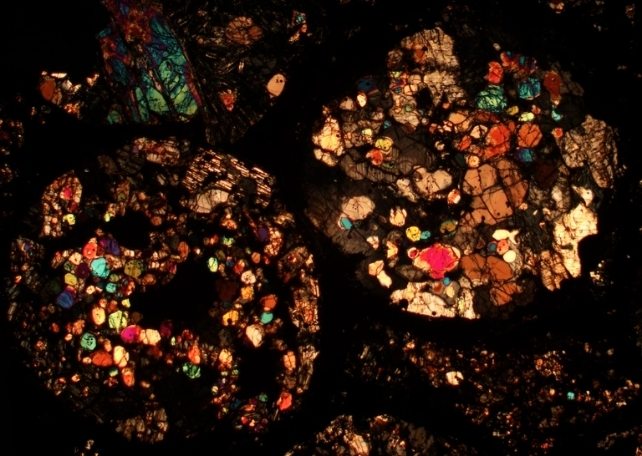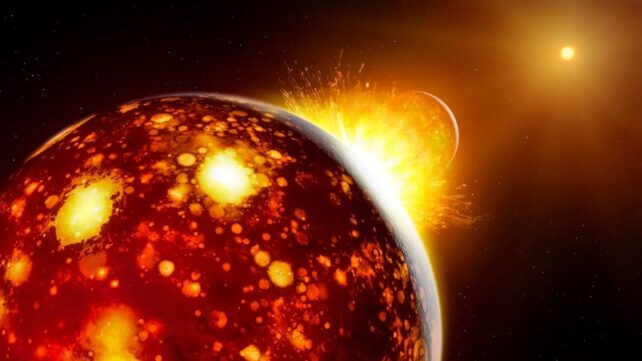One fateful day about 4.5 billion years ago, a Mars-sized body called Theia collided with proto-Earth, turning both into a molten mess of rock and metal. Once the debris had coalesced, two distinct objects remained locked in an orbit – Earth and its Moon.
But where did Theia come from? Right here in the warmer, cozier confines of the inner Solar System, it appears. In fact, Theia and proto-Earth may have been neighbors!
More specifically, Theia may have originated even closer to the Sun than we are today; perhaps closer than most of the material that accreted to form our own baby planet.
Related: Two Strange Giant 'Blobs' Deep Inside Earth May Finally Be Explained
These insights come courtesy of a recent study led by researchers from the Max Planck Institute for Solar System Research (MPS) and the University of Chicago.
Researchers analyzed samples from Earth, the Moon, and meteorites to check the ratios of numerous isotopes, which are lighter or heavier versions of a certain element with either fewer or additional neutrons in their nucleus.

"The composition of a body archives its entire history of formation, including its place of origin," explains MPS cosmochemist Thorsten Kleine.
Given time, materials making up a cooling planet settle in a fashion that depends on differences in their masses, melting points, solubilities, and affinities for other minerals. Iron and zirconium, for example, are found in varying concentrations across Earth's layers.
Iron, along with the iron-loving metal molybdenum, would have quickly sunk into the depths of proto-Earth's core, gathering like the precious jewels sequestered in a medieval dragon's horde. Zirconium, however, has remained in the mantle during the Earth's entire existence and has not sunk into the core.
It stands to reason that much of the iron now found in Earth's mantle must have arrived after the planet's reformation; delivered, perhaps, by a world-shattering cosmic impact.
But where did that iron-carrying object itself come from? Comparing the isotope ratios from different parts of the Solar System allowed the researchers to deduce a potential 'ingredient list' for Theia and trace its origin.
Variations within the giant molecular cloud that formed the Sun and its protoplanetary disk billions of years ago would also have favored the accumulation of different elements and isotopes.
Like "poorly mixed cake batter", these ratios remained in place, effectively providing a chemical signature for any object born from material in that location.
The Moon's chemical signature of iron, chromium, calcium, titanium, and zirconium matches Earth's, forcing the researchers to look elsewhere in the Solar System for tell-tale isotope ratios.
Meteorites are location-specific, and due to their primordial state, serve as cosmic time capsules. Those that come from the inner Solar System, or the planet-forming disk, are called non-carbonaceous (NC) meteorites. They're stony and have had the carbon and other volatile materials baked out of them by their close proximity to the Sun.
Meteorites from the outer Solar System are called carbonaceous chondrites (CC). They formed in more frigid environments, leaving them more carbon-rich, with water still trapped in their interiors.
Overall, the isotope ratios in the Earth's mantle match meteorites from the inner Solar System. Yet the isotopes the researchers assigned to Theia "have ratios that were previously unknown and do not match the building blocks of Earth."
"The most convincing scenario is that most of the building blocks of Earth and Theia originated in the inner Solar System," concludes lead-author and MPS geoscientist, Timo Hopp.
"Earth and Theia are likely to have been neighbors."
The rest, as is said, is history: the momentous clash between neighbors gave us our Moon, which has been drifting away ever since and is currently distancing itself from Earth at a sloth-like rate of 1.5 inches (3.8 centimeters) per year.
This research is published in the journal Science.

